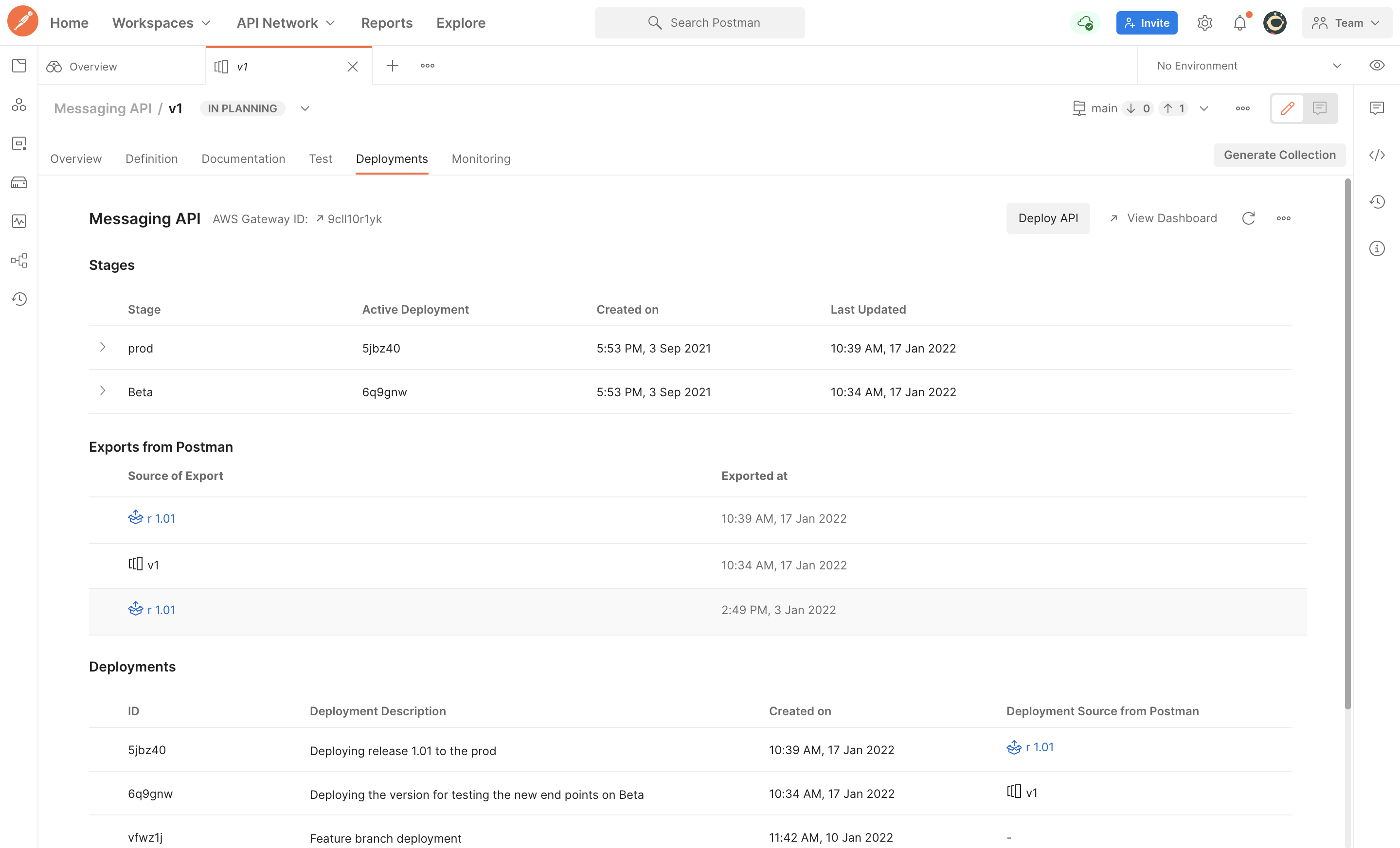Stay on Top of Your API Deployments: AWS API Gateway Integration
APIs are frequently developed and deployed. While the API development process is moving towards some standardization, the deployment process is vastly non-standard. In the 2021 State of the API Report, this issue was apparent. When asked how they deploy their APIs, users had varied answers—with 27% building custom solutions to do so.
With the latest Postman release, we bring API development and deployment closer together by allowing you to connect Postman with the AWS API gateway. This enables you to observe your deployment while correlating this information with the API’s schema, tests, documentation, etc. This means you now have a single platform to manage API development and deployment.
Connect your API gateway to Postman
Follow these steps to connect to your AWS API Gateway. Once connected, you can then see the details—such as the name, identifier, and the creation date of the API gateway.
Deploying your APIs on the gateway
A version defines a major variant of an API and its associated elements, such as documentation, tests, mock servers, and monitors. A release is a periodic incremental change to a version of an API. You regularly create a release to put out changes that have been made to the API.
After the API version release, you can now deploy the released schema to the AWS API Gateway stage from Postman. If you want to test out an API version in development, you can push the changes that are not yet released as well. Also, you may choose to only export the API schema to the gateway because there may be critical steps to perform on the gateway before deployment, in which case the schema would not be pushed to any stage.
A typical API development and deployment workflow will look as follows:

Observe APIs on deployment environments
The APIs are deployed on different environments regularly. The changes progress through your beta, stage, and production environments. The integration gives you an insight into various AWS API Gateway stages over which the APIs are deployed. Within Postman you can now see information such as name, creation timestamp, last update timestamp, invoke URL, along with the information of the active deployment on that stage.
Postman also helps you correlate the deployment data to the other API information such as schema, tests, documentation, and more, simply by linking the deployments/exports actions to the release:


What do you think about this feature? Tell us in a comment below. You can also give product feedback through our Community forum or GitHub repository.